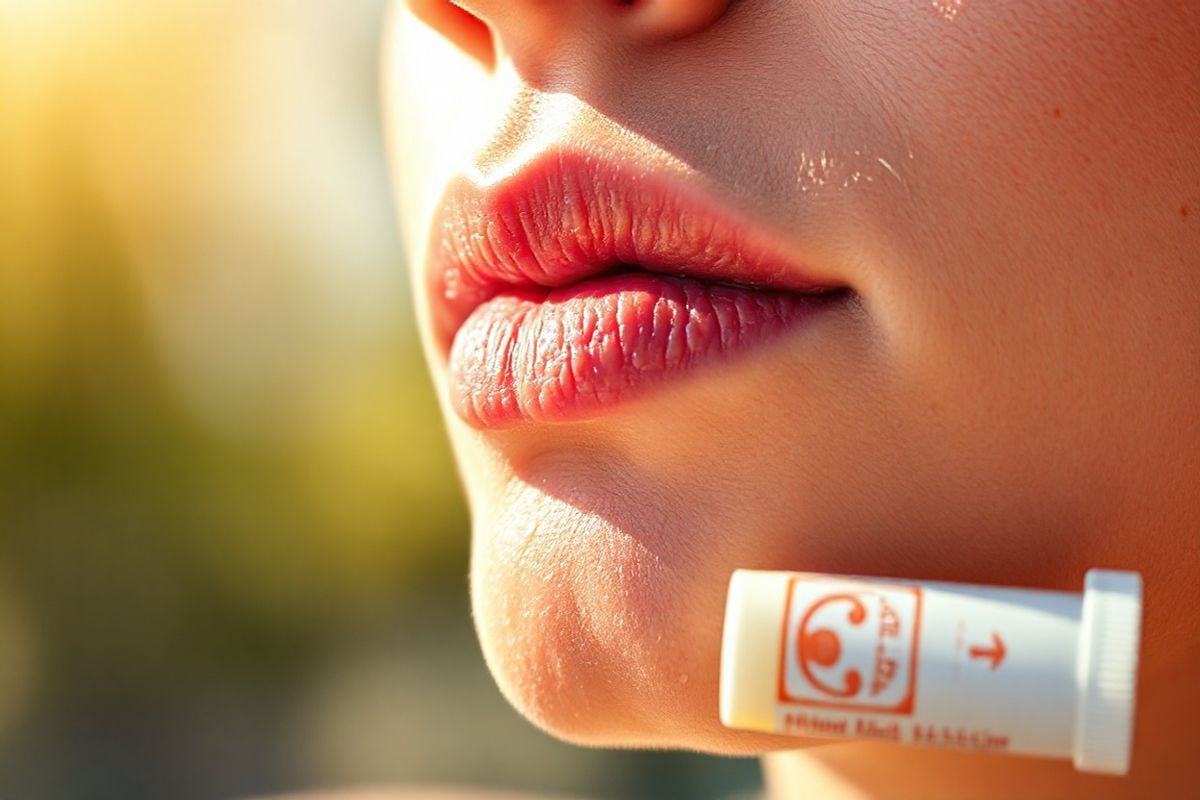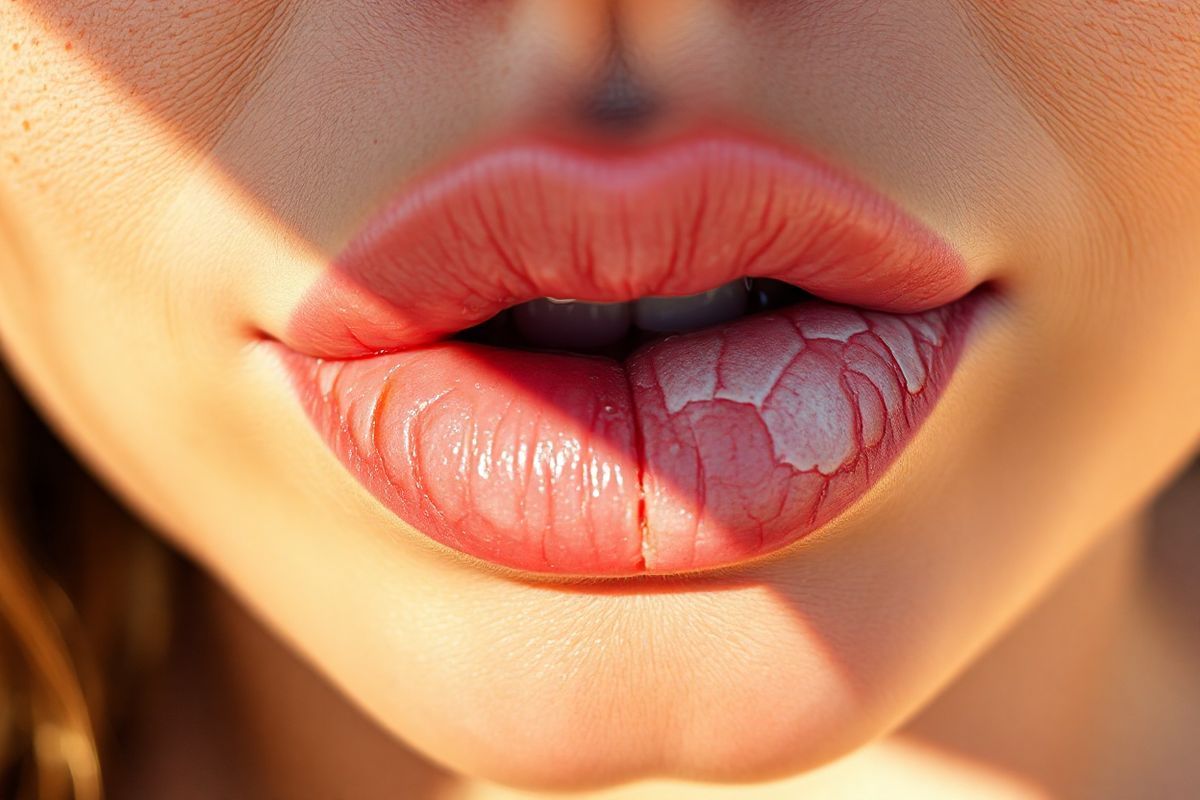Table of Contents
Unmasking Actinic Cheilitis: The Precursors of Lip cancer

Actinic cheilitis (AC) is a precancerous condition characterized by the abnormal thickening of the lip skin resulting from prolonged sun exposure. It primarily affects the lower lip, which is more susceptible to ultraviolet (UV) radiation due to its anatomical positioning. The condition manifests as dry, scaly patches that can become more pronounced and may bleed or ulcerate. According to research, individuals with actinic cheilitis are at an increased risk of developing squamous cell carcinoma (SCC) of the lip, highlighting the importance of early detection and management (Lee et al., 2024).
In a significant study, researchers indicated that about 10-20% of patients with actinic keratosis progress to SCC, a statistic that underscores the risk associated with untreated actinic lesions (Lee et al., 2024). The condition is most commonly observed in older adults, particularly those over the age of 50, who have extensive sun exposure histories.
TablCharacteristics of Actinic Cheilitis
| Feature | Description |
|---|---|
| Location | Primarily on the lower lip |
| Symptoms | Dryness, scaling, bleeding, ulceration |
| Risk Factors | UV exposure, fair skin, age, outdoor occupations |
| Potential Progression | Can develop into squamous cell carcinoma |
Recognizing the Symptoms: How to Differentiate Actinic Cheilitis from Lip Cancer

The symptoms of actinic cheilitis can often mimic those of lip cancer, making differentiation crucial for effective treatment. Actinic cheilitis typically presents with the following features:
- Dry, scaly patches: These are often white or yellow in color and can be easily mistaken for other skin conditions.
- Crusting and ulceration: Unlike benign conditions, these patches may bleed and become tender.
- Changes in lip texture: The lips may feel rough or have a rigid appearance.
On the other hand, squamous cell carcinoma of the lip often presents with more aggressive symptoms, including:
- Persistent sores: Unlike actinic cheilitis, which may heal intermittently, lesions associated with SCC do not heal and are often painful.
- Nodules: SCC may present as a firm, raised bump on the lip.
- Red or white patches: These patches are more pronounced and may appear inflamed.
Early diagnosis of actinic cheilitis is crucial, as the progression to SCC can occur if left untreated (Lee et al., 2024). Regular self-examinations and consultations with healthcare professionals can help in identifying changes in lip appearance and texture.
The Silent Culprits: Causes and Risk Factors of Actinic Cheilitis and Lip Cancer
The primary cause of actinic cheilitis is repeated exposure to UV radiation from the sun. Other risk factors include:
- Fair skin and light-colored eyes: Individuals with less melanin are at a higher risk due to reduced natural protection against UV rays.
- Age: The cumulative effect of sun exposure increases the likelihood of developing actinic lesions in older adults.
- Occupational hazards: Workers in outdoor professions, such as construction, are at a higher risk due to prolonged sun exposure (Lee et al., 2024).
In addition to UV exposure, the use of tobacco products has also been linked to an increased risk of developing SCC. Tobacco can cause direct damage to the cells in the lip, which may contribute to cancer development over time.
TablRisk Factors for Actinic Cheilitis and Lip Cancer
| Risk Factor | Description |
|---|---|
| UV Radiation | Primary cause; cumulative exposure is significant |
| Skin Type | Fair skin is more susceptible |
| Age | Increased risk in individuals over 50 |
| Occupational Exposure | Outdoor workers are at a higher risk |
| Tobacco Use | Direct damage to lip cells |
Treatment Options: Navigating the Path from Actinic Cheilitis to Squamous Cell Carcinoma
Treatment for actinic cheilitis aims to remove the precancerous lesions and prevent the progression to SCC. Options include:
- Topical therapies: Creams containing 5-fluorouracil (5-FU) or imiquimod are often prescribed to destroy abnormal cells.
- Cryotherapy: Liquid nitrogen is applied to freeze and destroy the affected tissue.
- Photodynamic therapy (PDT): This involves applying a photosensitizing agent to the lesions followed by exposure to light to activate the agent and destroy the cells.
If actinic cheilitis progresses to SCC, treatment options may include surgical excision, radiation therapy, and sometimes chemotherapy depending on the stage of the cancer. Regular follow-ups post-treatment are critical to monitor for recurrence or new lesions (Lee et al., 2024).
TablTreatment Modalities
| Treatment Option | Description |
|---|---|
| Topical Therapies | 5-FU and imiquimod creams |
| Cryotherapy | Freezing lesions with liquid nitrogen |
| Photodynamic Therapy (PDT) | Light-activated treatment |
| Surgery | Excision of cancerous lesions |
| Radiation Therapy | Targeted radiation for SCC |
Prevention Strategies: Safeguarding Your Lips Against Cancer Risks
Preventative measures against actinic cheilitis and subsequent SCC are essential. Key strategies include:
- Sun Protection: The use of high-SPF lip balms and sunscreens can protect the lips from harmful UV rays. It is critical to apply these products generously and reapply every two hours, especially after eating or drinking.
- Avoiding Tanning Beds: These artificial sources of UV radiation can significantly increase the risk of skin cancers.
- Regular Dermatological Check-ups: Regular visits to a dermatologist can help in the early detection of abnormal changes in the lips and surrounding skin.
Education on the risks associated with UV exposure and the importance of skin protection can aid in reducing the incidence of actinic cheilitis and SCC among at-risk populations.
TablPrevention Strategies
| Prevention Strategy | Description |
|---|---|
| Use of Sunscreen | High-SPF products for lip protection |
| Avoid Tanning Beds | Reduce exposure to artificial UV sources |
| Regular Dermatological Check-ups | Early detection of abnormal changes |
FAQ
What is actinic cheilitis?
Actinic cheilitis is a precancerous condition characterized by dry, scaly patches on the lips caused by prolonged sun exposure.
How can I tell if I have actinic cheilitis?
Symptoms include dry, scaly patches on the lower lip, tenderness, and bleeding. If these symptoms persist, consult a healthcare professional for evaluation.
What are the treatment options for actinic cheilitis?
Treatment options include topical therapies, cryotherapy, and photodynamic therapy. If it progresses to cancer, surgical options may be necessary.
How can I prevent actinic cheilitis?
Using sunscreen on your lips, avoiding tanning beds, and having regular dermatological check-ups can help prevent actinic cheilitis.
Is actinic cheilitis dangerous?
While actinic cheilitis itself is not cancerous, it can progress to squamous cell carcinoma if left untreated, making early detection and treatment crucial.
References
- Lee, Y.-S., Gu, H., Kim, H., Kwon, O., & Kang, M.-Y. (2024). Occupational Risk Factors for Skin Cancer: A Comprehensive Review. Journal of Korean Medical Science, 39, e316. https://doi.org/10.3346/jkms.2024.39.e316
- Mayo Clinic. (2023). Adjuvant therapy: Treatment to keep cancer from returning. Retrieved from https://www.mayoclinic.org/diseases-conditions/cancer/in-depth/adjuvant-therapy/art-20046687
- National Cancer Institute. (2023). Is Immunotherapy the Only Treatment Some People Need? Retrieved from https://www.cancer.gov/news-events/cancer-currents-blog/2023/neoadjuvant-immunotherapy-only-treatment
- Pagliari, G. G., Colonese, F., Canova, S., Abbate, M. I., Sala, L., Petrella, F., & Cortinovis, D. L. (2024). Intratumoral Treatment in Lung Cancer: Is It Time to Move Towards Clinical Practice? cancers (Basel), 16(23), 3892. https://doi.org/10.3390/cancers16233892
- Shabnum, S. S., Siranjeevi, R., Raj, C. K., Saravanan, A., Vickram, A. S., & Chopra, H. (2024). Advancements in nanotechnology-driven photodynamic and photothermal therapies: mechanistic insights and synergistic approaches for cancer treatment. RSC Advances, 14, 1234










